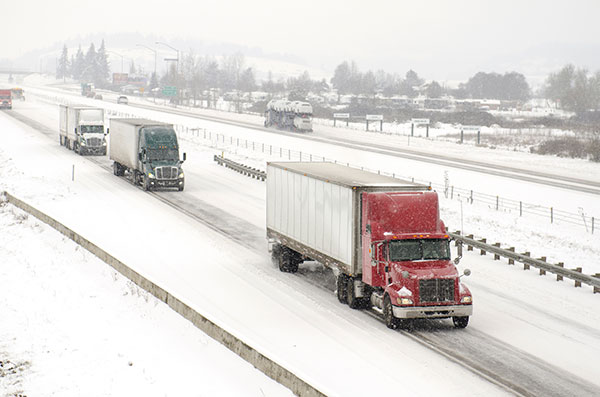The 2025 peak shipping season is shaping up to be one of the most unpredictable in recent memory. While early indicators suggest an uptick in freight volumes compared to last year, global trade dynamics — especially tariffs and shifting sourcing strategies — are adding layers of uncertainty. For both shippers and carriers, success this season will come down to preparation, flexibility, and partnerships that expand their capacity to respond quickly.
The current outlook for peak season
What’s Related
Freight volumes are showing signs of recovery, with industries ranging from retail and textiles to manufacturing reporting stronger shipping activity. However, tariffs remain a wildcard. Some companies are accelerating imports ahead of potential tariff hikes, while others are waiting for clarity.
Traditionally, peak season is fueled by retail, with imports of goods like apparel, home goods, and consumer electronics. This remains true today, but sourcing has shifted: textiles, once heavily dependent on China, are now increasingly sourced from India and Vietnam. Meanwhile, U.S. agriculture harvests and Canadian exports like canola oil add seasonal strain on capacity.
Despite the complexity, most industry observers agree: if tariffs are removed from the equation, volumes in 2025 are tracking ahead of last year.
Capacity and contracts
For now, trucking capacity appears sufficient, with asset-based carriers still largely in control. That said, shippers are actively preparing for uncertainty by locking in contracts, such as mini-bids to adjust rates under Master Service Agreements (MSAs). The rise in these renegotiations suggests shippers are bracing for volatility and seeking stability in their freight costs.
Even without major disruptions, it’s clear that carriers will need to remain agile. Seasonal surges, coupled with shifts in trade lanes (for example, diversions away from congested ports), could quickly tighten available capacity.
The tariff effect on peak season
Tariffs remain the biggest source of unpredictability going into this year’s holiday season. Proposed measures extend beyond China to include imports from India and other South Asian countries, raising costs for textiles, apparel, and home goods.
Also, the recent changes to de minimis thresholds, previously used by large online retailers to import shipments under $800 duty-free, will further reshape how goods enter the U.S. and how consumer wallets are affected ahead of the holiday season.
The reality is simple: until the federal government provides a definitive stance on tariffs, shippers and carriers must plan as though both best- and worst-case scenarios are possible.
Shipper and carrier strategies for navigating uncertainty
In such an environment, the best advice is pragmatic: avoid overreacting until regulatory direction is clear, and focus on execution.
For shippers, the best approach in the current environment is to stay the course on sourcing until tariffs are finalized, avoiding premature shifts that could create unnecessary costs or disruptions. At the same time, it is wise to diversify trade lanes where possible, with an eye toward nearshoring options in Mexico or Canada to build resilience against global uncertainties. Finally, shippers should plan ahead for potential surges in demand by leveraging mini-bids and contract renegotiations, ensuring more predictable rates and greater stability as peak season pressures build.
For carriers, priorities center on maintaining flexibility in equipment deployment to effectively serve both retail and industrial freight as demand fluctuates. Expanding and strengthening vetted carrier networks is also critical to minimizing risks of fraud and service breakdowns, ensuring reliability during high-volume periods. In addition, carriers should prepare for the inevitable post-peak lull, which typically stretches from Thanksgiving through the Chinese New Year, by planning ahead to balance capacity and sustain operations during this seasonal slowdown.
The role of third-party logistics providers
While shippers and carriers can prepare individually, peak season often reveals the limitations of internal teams, making partnerships with a 3PL especially valuable. A 3PL provides scalable capacity by connecting shippers to additional carrier networks, ensuring access to trucks and equipment even during the most demanding times. They also bring critical operational expertise, filling gaps for lean supply chain offices that may lack the staff needed for onboarding, dispatching, and thorough carrier vetting. With higher freight volumes comes an increased risk of disruptions, and 3PLs help mitigate these challenges by reducing exposure to theft, fraud, and service breakdowns through strict vetting processes and diversified carrier relationships.
Beyond immediate problem-solving, the most effective 3PLs act as true strategic partners, functioning as an extension of a shipper’s transportation department and contributing not only to cost savings but also to long-term supply chain resilience. While many shippers rely on 3PLs primarily during peak, the greatest benefit comes from maintaining these partnerships year-round, ensuring continuity, efficiency, and readiness for whatever challenges the next season may bring.
Business as usual – with contingency plans
The 2025 peak season carries more uncertainty than most. Volumes appear stronger, but tariffs, sourcing shifts, and regulatory ambiguity complicate forecasting. For now, shippers and carriers should treat this as a “business as usual” season, while quietly preparing contingency plans.
Flexibility, strong partnerships, and disciplined execution will be the keys to weathering the unknown. And for those who lean on 3PL partnerships, the benefits will be felt not only in the months ahead but long after peak season has passed.
Eric Fortmeyer is President & CEO of Circle Logistics.

